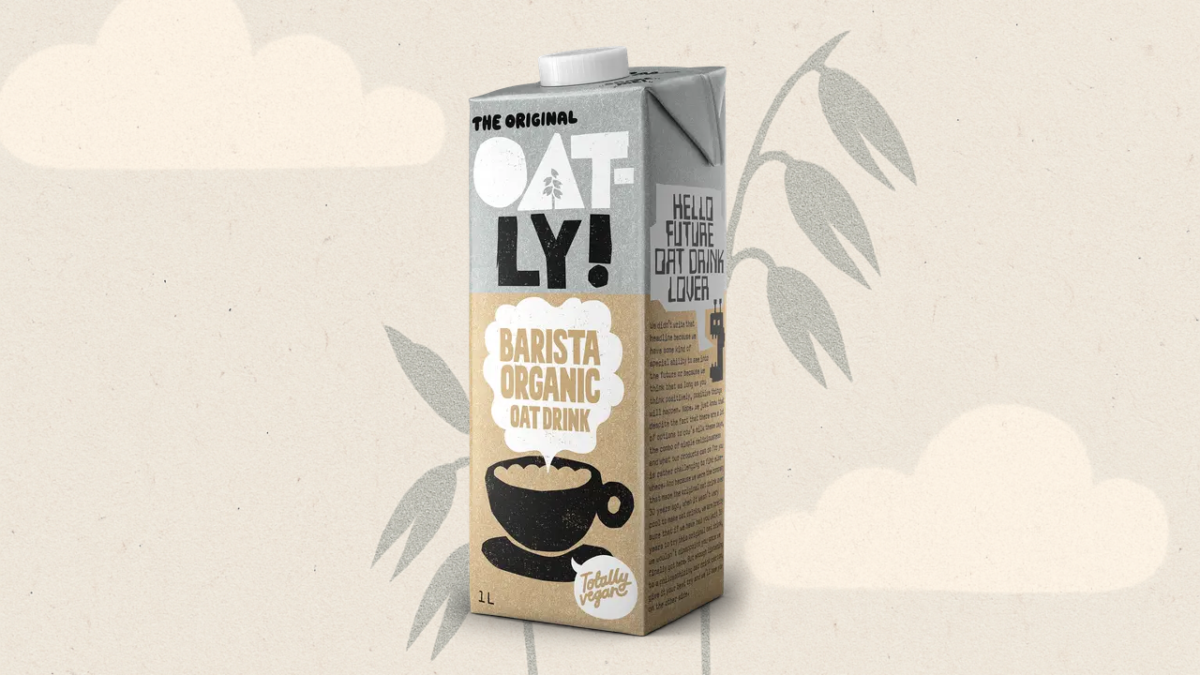Table of Contents
Introduction
In a saturated market of plant-based alternatives, Oatly did the unthinkable—it made oat milk cool. What started as a quiet Swedish food science project in the 1990s exploded into a global lifestyle movement, turning a humble dairy alternative into a cult brand with a multi-billion dollar valuation.
But Oatly’s rise isn’t just about product innovation—it’s about marketing genius, storytelling, and a purpose that resonates with a climate-conscious generation. Here’s how Oatly changed the playbook for plant-based startups around the world.
Turning a Commodity Into a Brand Movement
Before Oatly, oat milk was just another dairy alternative. Soy and almond milk dominated the conversation. Oatly didn’t just sell oat milk—it sold a lifestyle. Its tone was cheeky, its packaging bold, and its messaging refreshingly honest.
Key Branding Elements:
- Handwritten fonts and self-aware copy: “It’s like milk, but made for humans.”
- Minimalist packaging with retro vibes
- Transparent marketing with nutrition, climate impact, and company ethics clearly labeled
This unfiltered approach made the brand stand out in a sea of “greenwashed” competitors.
Marketing Without Traditional Advertising
Oatly rarely relied on paid mainstream advertising. Instead, it leaned on:
- Street posters and guerrilla campaigns
- Activist-inspired packaging copy
- Product-first storytelling via social media
- Controversial Super Bowl ads with the CEO singing awkwardly—on purpose
This unorthodox style generated both praise and backlash—but most importantly, it kept people talking.
Owning Sustainability Through Supply Chain Transparency
Oatly didn’t just say it was sustainable—it proved it. The company goes deep on transparency by sharing its:
- Carbon footprint per product
- Sustainable farming practices
- Ongoing lifecycle assessments
It created a strong link between environmental responsibility and product value, turning climate guilt into climate action—through consumption.
Example: Oatly’s 2025 report shows a 38% reduction in CO2 per litre since 2019.
Building an Ecosystem: From Baristas to Billboard Wars
Oatly’s initial strategy targeted coffee culture, becoming the go-to milk for third-wave cafés across the US and Europe. The Barista Edition not only performed well with foam but built brand loyalty among elite café circles—who then marketed Oatly organically.
Unique Initiatives:
- Billboard battles with dairy lobbies in Sweden and the UK
- Educational zines and public reports
- Climate footprint on every carton
This created a self-reinforcing ecosystem where brand fans became brand evangelists.
Read Also: Label-less Packaging: Redefining the Future of Sustainable Branding
Embracing Criticism & Controversy
Oatly isn’t afraid to embrace polarizing conversations, whether it’s facing criticism for accepting private equity from Blackstone or its cheeky anti-dairy messaging.
Instead of hiding, the brand uses backlash as a platform to educate and challenge norms.
“We’re not perfect. But we’re trying.” – a core Oatly message.
Lessons for Startups: Oatley’s Brand Blueprint
| Oatly Strategy | Takeaway for Startups |
|---|---|
| Product with a purpose | Don’t just sell—solve a real-world problem |
| Transparent storytelling | Authenticity beats perfection |
| Community-first marketing | Turn users into evangelists |
| Category creation | Don’t compete—redefine the game |
| Embrace your weirdness | Stand for something—even if it’s divisive |
Strategic Global Expansion: Scaling Without Losing Identity
Oatly’s global expansion strategy was slow but deliberate. Instead of rushing into every market, the brand chose to anchor itself in culture before commerce. It partnered with local baristas, designed region-specific campaigns, and tailored messaging to match each market’s sentiment around sustainability and health.
In the U.S., for example, the brand launched their first in specialty coffee shops before hitting retail. In Asia, it localized its messaging while maintaining its core identity. This thoughtful rollout ensured that the brand didn’t come across as another imported health fad—but as a mission-driven movement that respected local nuances.
Final Thoughts: More Than Milk
The brand’s success lies not in simply producing oat milk, but in owning the conversation around what milk should be. By combining humor, activism, thoughtful design, and a strong sustainability mission, it set a new standard for plant-based branding. It stands today as a blueprint for how modern startups can influence consumer behavior and reshape market expectations—not just follow them.
Want to Build a Brand Like Oatly?
Stay tuned to iTMunch.com for deep dives into how bold branding, sustainability, and tech are redefining markets.





